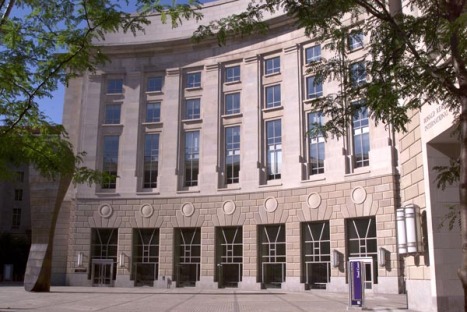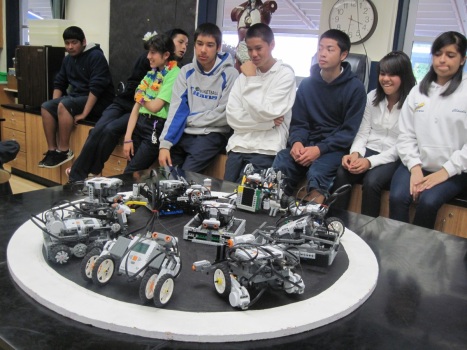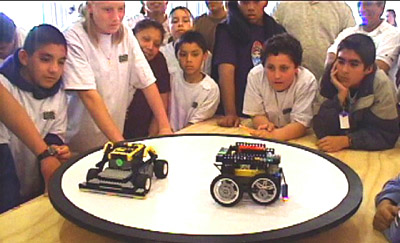Blog Post at Luke Laurie’s Teacher Blog : https://lukelaurie.wordpress.com/
Teacher’s Network Leadership Institute Fellow, Policy Work for 2009-2010

The Einstein Fellowship 20th Anniversary Summit:
Planning the Program
Introduction:
During the 2009-2010 school year I committed myself to engaging in policy work, rather than action research. My initial plan was to advocate for policies to improve STEM (Science, Technology, Engineering, and Mathematics) education. Little did I know, I would be swept up by a project that would become a national summit of leading STEM educators.
Background:
This year, 2010, marks the 20th Anniversary of the Albert Einstein Distinguished Educator Fellowship, also known as the Einstein Fellowship. This unique program brings teachers of science and mathematics to Washington, D.C. to work in the House of Representatives, the U.S. Senate, and various federal government agencies, such as the Department of Energy, the National Science Foundation, NASA, and NOAA. Recipients of the fellowship are known as Einstein Fellows. They serve one-year terms living and working in Washington, D.C. With their extensive classroom knowledge, experience, and credentials, Einstein Fellows provide practical insights and “real world” perspectives to policy makers and program managers.
From 2006-2007, I served as an Einstein Fellow in the office of Congressman Mike Honda. During my fellowship, I had many opportunities to learn about policy, legislation, and government. I also had the opportunity to contribute to policy by advising the Congressman on education, appropriations, and environmental issues, and by participating in briefings and roundtable discussions on those issues. My work focused on education equity, enhancing science education, and improving the understanding of global warming. Following my fellowship year, I returned to the classroom, to continue my career teaching junior high science and robotics in Santa Maria, CA.
Summary of Work:
In Fall of 2009, I joined a group of former Einstein Fellows in conversations about the possibility of holding an event to celebrate the 20th anniversary of the Einstein Fellowship, by bringing Fellows from the last 20 years together for an event in Washington D.C.. We formed a Planning Committee of fellows who were committed to spending a significant amount of time making all the decisions and preparations that would be necessary. Through numerous conference calls and thousands of emails, this grassroots event evolved to become the Einstein Fellowship 20th Anniversary Summit (called the E20 Summit by the Planning Committee), which will be held in Washington, D.C. from June 27 through June 30, at the Woodrow Wilson International Center for Scholars. This summary was written after the planning process was complete, but prior to the actual Summit.
The Planning Committee conceptualized the event to be less of a celebration, and more of an opportunity to have a meeting of minds, to share ideas and build upon the vast and varied experiences of Einstein Fellows. We divided the work into three subcommittees: Fundraising; Logistics and Budget; and Program. The Fundraising Subcommittee successfully harnessed the support of government agencies, science and education organizations, and industry partners to provide funding to carry out the objectives of the E20 Summit. The Logistics and Budget Subcommittee coordinated the venues, vendors, and bookkeeping. I took leadership of the Program Subcommittee and became the Chair to coordinate the development of the substantive components of the Summit.
The goals of the E20 Summit, as stated in our proposal, were as follows:
- Publish and disseminate a formal report of the E20 Summit proceedings with key recommendations to inform ESEA (the Elementary and Secondary Education Act, commonly known as No Child Left Behind) and improve STEM education;
- Recognize the accomplishments of Einstein Fellows and their collective contributions to policy, programs and the advancement of K-12 STEM education;
- Promote the professional capabilities of Einstein Fellows, and other nationally recognized teachers, to national, state and local STEM education stakeholders;
- Illustrate the efficacy of the Einstein Fellowship program as a best practice of STEM policy inclusion for teachers and professional development model;
- Formalize and strengthen the Einstein Fellowship network.
It was a joy to work with the other members of the Planning Committee and the Program Subcommittee. On many aspects we shared common goals. Where we disagreed, we discussed our differences in a constructive manner and found compromises that everyone could accept. All participants had served as Einstein Fellows within the last twenty years in various offices and agencies, and were from many different parts of the United States. Most were science teachers of various disciplines, and some taught mathematics. The wealth of knowledge and experience in the group was incredible. Each Fellow had many valuable connections that we were able to draw from as valuable resources to implement the goals of the Summit.
The Program Subcommittee formulated the content of the Summit. Through a lengthy brainstorming process and a series of collaborative discussions, the Subcommittee created a list of possible topics around which workshops, panel discussions, or roundtable discussions could be created. The group solicited input from active members of the Planning Committee, as well as other Fellows who might attend the Summit. From this input, we created a schedule covering topics pertinent to Einstein Fellows, and relevant to the current national dialog on STEM education. We assigned facilitators to manage the sessions and worked with them to connect with experienced speakers and panelists in positions of authority within the appropriate fields. Throughout this development process, all relevant information was compiled into a document that would become the final Program for the Einstein 20th Anniversary Summit.
The final Program is a 21-page document, and includes the following elements:
- A welcome statement
- A description of the three locations for events, The Wilson Center, The Rayburn House Office Building, and The J.W. Marriott Hotel in Washington, D.C.
- A brief agenda summary
- A detailed program of all sessions and events
- The text of H.Res. 1322, a Congressional Resolution Celebrating the 20th Anniversary of the Einstein Fellowship, which passed the House on June 15, 2010.
- A list of the Planning Committee and Subcommittee members.
- Brief biographic information about all of the facilitators, panelists, and featured guests
- A full list of approximately 200 Albert Einstein Distinguished Educator Fellows from the first 20 years.
- A list of sponsors and supporters
Looking Ahead:
Following the Summit, a report of the findings will be published by the Wilson Center and distributed nationally. In addition, we will be forming an Einstein Policy Team, which will work to promote and advocate for ways to improve STEM education using the findings of the Summit. The Einstein Policy Team will be involved in advocacy at the local, State, and National level. It is our hope that through this advocacy, we will be able to make notable contributions and give teachers a stronger voice.
More info on the Summit can be found at the official website:
http://sites.google.com/site/einstein20summit/
Filed under: Education, Policy, Science | Tagged: 20th Anniversary, E20 Summit, Education, Einstein Fellow, Engineering, ESEA, Luke Laurie, mathematics, nclb, Policy, Science, STEM, teacher, Teacher's Network, technology, TNLI, Wilson Center | Leave a comment »













